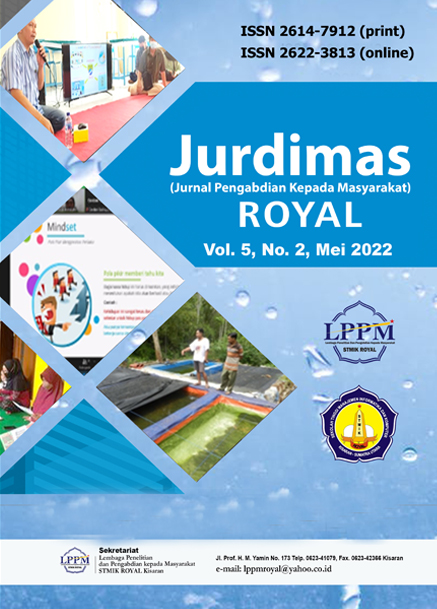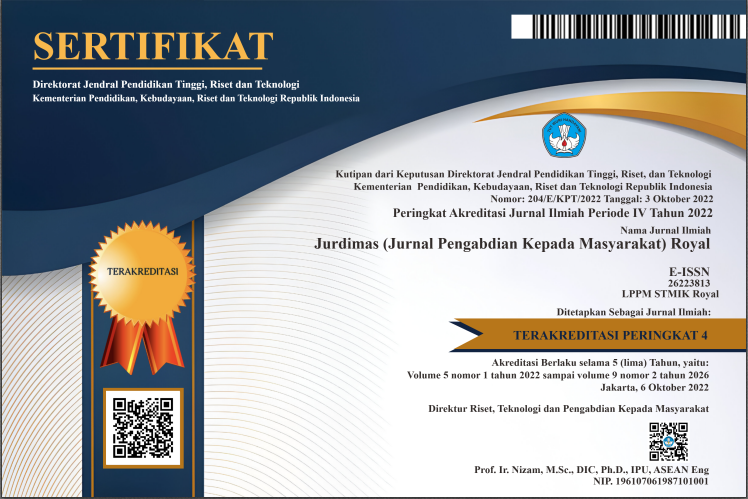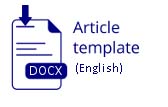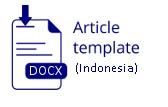Pelatihan Rebranding Produk Untuk Perluasan Pasar Sangkar Burung Di Kabupaten Jember
Abstract
Abstract: Brands in SMEs consist of a set of factors, including marketability and market differentiation, brand awareness, relevance, culture, association, and equity. The most important thing to ask yourself when deciding whether this is the right time to change your brand is whether SMEs can leverage any of the factors above to make SME consumers happier. Rebranding is an excellent way to change the target market for SMEs. Sees rebranding as a solution to a new management change or internal problem. Rebranding takes time and effort so that change will happen. Rebranding is carried out for SMEs to stimulate growth, expand, increase profits, strengthen their workforce, and gain a competitive advantage. This rebranding training was carried out using a training method. Due to the pandemic, the activity organizers visited five artisans to avoid crowds. The rebranding training opened the insight of the craftsmen about the benefits of managing a product brand. The rebranding training for birdcage artisans in Dawuhanmangli Village gained an understanding of branding. As a result of this training, artisans began to open themselves to introduce their products directly to consumers without a broker like before. The Bird Cage craft center in Dawuhanmangli Village, north of the center of Jember City, is well known in Indonesia. The location is 24 km from Jember City. The Bird Cage of Dawuhanmangli Village is the reason for being a place of service because it has advantages and characteristics that have the opportunity to open new markets for the region's superior products.
Keywords: branding; smes; bird cage
Abstrak: Merek pada UMKM terdiri dari sekumpulan faktor, termasuk kemampuan pemasaran serta diferensiasi pasar, kesadaran merek, relevansi, budaya, asosiasi, dan ekuitas. Hal terpenting untuk ditanyakan pada diri sendiri saat memutuskan apakah ini waktu yang tepat untuk mengubah merek adalah apakah UMKM dapat meningkatkan salah satu faktor di atas untuk membuat konsumen UMKM lebih bahagia. Rebranding merupakan cara yang baik untuk mengubah target pasar UMKM. Melihat rebranding sebagai solusi untuk perubahan manajemen baru atau masalah internal. Rebranding membutuhkan waktu dan tenaga, sehingga perubahan akan terjadi. Rebranding dilakukan bagi UMKM untuk merangsang pertumbuhan, memperluas, meningkatkan laba, memperkuat tenaga kerjanya, dan mendapatkan keunggulan kompetitif. Pelatihan Rebranding ini dilakuan dengan metode pelatihan, dikarenakan pandemi, maka pelaksana kegiatan mendatangi 5 pengrajin untuk menghindari kerumuman. Pelatihan rebranding membuka wawasan para pengrajin tentang manfaat mengelola sebua brand sebuah produk. Hasil pelatihan rebranding pengrajin sangkar burung desa Dawuhan mangli mendapatkan pemahaman tentang branding. Dampak pelatihan ini pengrajin mulai mencoba membuka diri untuk mengenalkan produknya secara langsung kepada konsumen tanpa makelar seperti sebelumnya. Sentra kerajinan Sangkar Burung di desa Dawuhan mangli, wilayah utara pusat Kota Jember sudah dikenal luas di Indonesia.
Kata kunci: merek; umkm; sangkar burung
References
Almeida, M. I. S. de, Porto, R. B., & Coelho, R. L. F. (2020). How marketing balances the battle be-tween premium and regular prod-ucts? Brand sales dynamics in an emerging market. International Journal of Emerging Markets, 15(6), 1265–1286. https://doi.org/10.1108/IJOEM-06-2019-0457
Ayuningtias, N., Widodo, J., Zulianto, M., & Wahyuni, S. (2020). Prod-ucts innovation and diversifica-tion strategies of Banyuwangi lo-cal food souvenirs at UD. Sri Re-jeki Genteng, Banyuwangi. IOP Conference Series: Earth and En-vironmental Science, 485(1), 012124. https://doi.org/10.1088/1755-1315/485/1/012124
Chung, J.-E., Jin, B., Jeong, S. W., & Yang, H. (2019). NIE-based SME brand building in foreign markets: an exploratory study. Journal of Product & Brand Management, 28(1), 63–79. https://doi.org/10.1108/JPBM-10-2016-1331
Iyer, P., Davari, A., Zolfagharian, M., & Paswan, A. (2021). Organization-al ambidexterity, brand manage-ment capability and brand per-formance. Journal of Business & Industrial Marketing, 36(6), 946–961. https://doi.org/10.1108/JBIM-12-2019-0522
Odoom, R. (2016). Brand-building ef-forts in high and low performing small and medium-sized enter-prises (SMEs). Journal of Small Business and Enterprise Devel-opment, 23(4), 1229–1246. https://doi.org/10.1108/JSBED-05-2016-0067
Odoom, R., Agbemabiese, G. C., An-ning-Dorson, T., & Mensah, P. (2017). Branding capabilities and SME performance in an emerging market: The moderating effect of brand regulations. Marketing In-telligence & Planning., 35(4), 473–487. https://doi.org/10.1108/MIP-08-2016-0138
Rokhim, R., Mayasari, I., & Wulandari, P. (2021). Is brand management critical to SMEs’ product sustainability? Qualitative analysis in the context of Indonesia's small enterprise environment. IOP Conference Series: Earth and Environmental Science, 716(1), 012109. https://doi.org/10.1088/1755-1315/716/1/012109
Tarnovskaya, V., & Biedenbach, G. (2018). Corporate rebranding failure and brand meanings in the digital environment. Marketing Intelligence & Planning, 36(4), 455–469. https://doi.org/10.1108/MIP-09-2017-0192
Wahyuni, S., Widodo, J., Zulianto, M., & Islami, N. N. (2020). The analysis of e-commerce utilization in Micro, Small, and Medium Enterprises (MSMEs) at Jember. IOP Conference Series: Earth and Environmental Science, 485(1). https://doi.org/10.1088/1755-1315/485/1/012037
Yu, Y., Rothenberg, L., & Moore, M. (2021). Exploring young consumer's decisionâ€making for luxury co-branding combinations. International Journal of Retail & Distribution Management, 49(3), 341–358. https://doi.org/10.1108/IJRDM-12-2019-0399.














